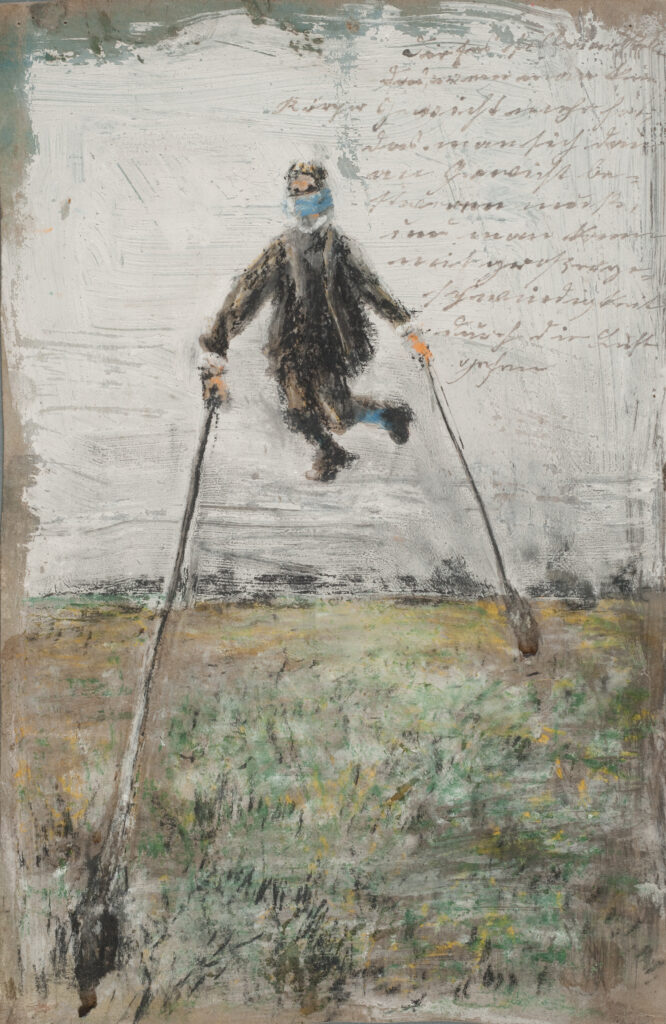Josef Forster
Self-Portrait (Man Without Gravity, Man on Stilts)
1916–1921

Wallpaper master and decoration painter Josef Forster arrived at the Charterhouse Prüll medical institution in 1917. He introduced himself as a painter and a singer and created an amazing volume of artwork there. The logo design of the Prinzhorn Collection museum, opened in 2001, features Forster’s only untitled painting which later became known as Self-Portrait or Man Without Gravity. In 2011, the museum organised the Walking Through the Air exhibition dedicated to Forster’s work.
Forster helped with the design work at the hospital and was given his own space, where he mainly painted, drew, sketched machines and engines and sang Wagner’s operas. Only 20 of his paintings have survived. Art theorists emphasise the versatility and prominence of Forster’s talent, especially in portrait painting. Forster was very confident as an artist; he compared his works with those of Rubens, Raphael and Rembrandt.
“In interpreting Forster’s work, many contrasts, contextualisations and perspectives help us /…/ understand that the dreams of rising to heights have similar roots both inside and outside of the asylum.” (Maike Rotzoll)
“Forster’s works show how successfully it is possible to integrate one’s deviations from reality into artistic creation.” (Thomas Röske)